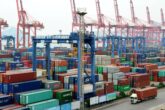August 13, 2020
Trade Controls are a Limited Tool of Foreign Policy
One of the difficulties of developing export control policies has been the tendency to expect too much of them. They are a limited tool capable of helping the U.S. government achieve some important objectives, but they cannot solve by themselves all our foreign policy problems or vanquish our adversaries.
While the government has authority to use export controls for foreign policy objectives, traditionally the main purpose of export controls has been to prevent the flow of critical technologies that have military applications to U.S. adversaries. When the technology in question is clearly military, such as a weapons system, the decision is fairly straightforward. However, when the item or technology is dual-use—having both civilian and military applications—the decisionmaking process is more complicated, as is the enforcement process.
Traditionally the main purpose of export controls has been to prevent the flow of critical technologies that have military applications to U.S. adversaries.
At the front end, the process for deciding whether critical technologies can be exported was initially simple. During the Cold War, the United States assumed that anything exported to the Soviet Union could end up in the hands of the Soviet armed forces, so the decision was simply whether we wanted the Soviet Union to have the item or not. Now we have a more complex array of adversaries, including non-state actors, and a process focused on specific end users rather than simply countries or governments. That has increased the demands on the U.S. intelligence community, increased the risk of a mistake, and increased the need for downstream enforcement—making sure the export actually goes where it is supposed to go and does what it is supposed to do, rather than getting diverted to other end users or end uses. The digitization of commerce has made all these elements even more difficult.
If the goal is to ensure our adversaries acquire nothing that they need, we are doomed to failure.
For the last several decades the de facto policy has been to permit the export of older technology but to keep adversaries a generation or two behind the United States technologically. This had the dual advantage of keeping adversaries reliant on U.S. technology and making sure we were able to run faster and stay ahead of them. It was an effective strategy when our adversaries did not have the means to develop their own high-tech alternatives. Now one of them, China, has the capability to develop its own alternatives and has been clear in its intent to do so. That suggests U.S. policy has run out of gas and that it is time to rethink.
We have a similar enforcement challenge, and we must tackle it realistically. If the goal is to ensure our adversaries acquire nothing that they need, we are doomed to failure. However, we can work to ensure that an adversary takes ten years rather than five years to acquire a technology, that they can’t acquire everything they need, and that the cost is ten times what they budgeted. If we use that extra time to run faster technologically ourselves, then we will continue to prevail.
About the Author
William A. Reinsch is a Senior Advisor and Scholl Chair in International Business at the Center for Strategic and International Studies.
Learn More
CNAS has asked a group of experts and policymakers to offer their perspectives on the policy goals that U.S. export controls should serve, and how and under what circumstances U.S. export controls can effectively achieve those policy goals.

Export Controls Are a Defining Instrument of U.S. National Security
A group of experts and policymakers offers their perspectives on the policy goals that U.S. export controls should serve....
Read MoreMore from CNAS
-
Ziemba: China Could Impose Retaliatory Tariffs on U.S.
If tariffs and costs continue to rise, it will not be great for oil demand within the US, that's according to Rachel Ziemba, Adjunct Senior Fellow at the Center for a New Amer...
By Rachel Ziemba
-
Sharper: Trump 2.0
Donald Trump's return to the White House is widely expected to reshape America's global priorities. With personnel choices and policy agendas that mark a significant break fro...
By Charles Horn & Gwendolyn Nowaczyk
-
Disorderly Conduct
The United States must develop a strong, pragmatic strategy for advancing its economic and security interests within the U.S.-China economic relationship, accounting for the f...
By Emily Kilcrease & Adam Tong
-
No Winners in This Game
Watch...




